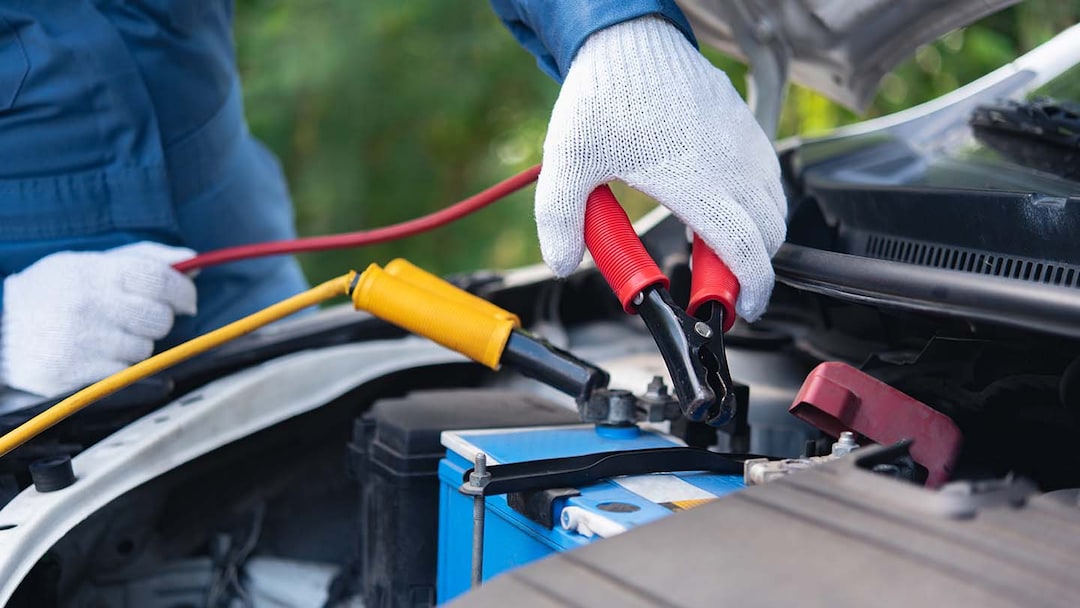What is roadside assistance?

Quick insights
- Roadside assistance offers a range of on-demand services that can be very helpful in certain situations.
- Examples of roadside assistance include towing services, changing a tire or replacing a dead battery.
- Roadside assistance is commonly offered as a form of add-on insurance coverage you can purchase but may be included in an insurance plan.
Whether it’s for a flat tire or a bad car battery, roadside assistance could come in clutch if you find yourself stranded on the side of a road less traveled. But while any helpful gesture on the road could be considered a form of “roadside assistance,” what is roadside assistance officially?
Let's learn more about roadside assistance and the peace of mind it may offer you as a driver.
How does roadside assistance work?
To put it simply, roadside assistance coverage helps you by locating and coordinating emergency roadside assistance like jump starts for a bad car battery, tire replacements, towing and more when there’s no help nearby. Depending on your policy, some programs may also assist with the expenses incurred from such a situation.
Much like purchasing a car insurance policy, you will need to pay for a roadside assistance policy before receiving any benefits. Plus, like your auto insurance policy, there are different levels of roadside assistance coverage depending on your needs. Depending on your provider, you may have to pay for services up front and submit receipts for reimbursement.
If roadside assistance isn’t part of your insurance policy, you can typically purchase it several ways:
- As an add-on to your auto insurance policy.
- Through an auto club membership that offers roadside assistance.
- As a perk from your employer.
- As a benefit through a credit card company.
Once your policy kicks in, your roadside assistance policy will be available if you need services. Typically, you can contact your roadside assistance provider on an app or by phone if you experience car trouble. Then, a dispatch operator will send someone to assist you depending on your car issues.
What does roadside assistance cover?
Roadside assistance insurance plans can offer a range of benefits and features. Every contract works a little differently, so it may be helpful to read through your policy’s paperwork thoroughly to understand what’s covered.
Depending on your coverage, you may be able to receive:
- Towing services to move your car to a service center.
- Help getting into your car if you locked your keys inside.
- Flat tire replacement if you're immobilized by your wheels.
- Winching your car (pulling it out) if it’s stuck in a ditch.
- Battery jump-start (or replacement in some cases) if your car is dead and unresponsive.
- Transportation assistance to move you (not your car) if you find yourself stranded.
What does roadside assistance exclude?
It's good to note that roadside assistance isn’t the same as emergency services, such as medical aid.
There may be a few other limitations of roadside assistance to keep in mind:
- Your existing auto insurance coverage: You may need collision and comprehensive coverage to purchase a roadside assistance insurance plan through your existing auto insurance company.
- Knowing which car is covered: If you purchase a roadside assistance insurance policy, it will apply only to one car. So, if you find yourself driving a family member’s car and it breaks down, you likely won’t be able to apply your policy to this incident.
- Having your membership card on-hand: In most cases, you’ll need to provide valid identification and your membership card to receive emergency roadside services. If you’ve misplaced your card, however, don’t fret — a customer service representative may be able to look up your membership number for you.
- Service limitations: Depending on the roadside assistance plan you’ve purchased, you may be limited as to how many services you can receive before you go out-of-pocket. For example, your policy may allot only a certain amount of towing mileage before you’re expected to start footing the bill yourself.
How much is roadside assistance going to cost?
The price you pay for a roadside assistance policy can vary greatly depending on things like the provider, your location, your car and extent of the coverage you elect to purchase. Investing in being ready for an emergency is one of those things that you ultimately hope to never need but would be glad to have in some cases. A single tow truck or jump-start could be worth the cost of an annual roadside assistance plan.
Shopping for a roadside assistance program
When shopping for a roadside assistance plan, here are several aspects to review:
- Additional perks: Some plans come with other perks and discounts at your fingertips. While that may increase their cost, added benefits like free passport photos could be worthwhile if you’re a frequent traveler, for instance.
- Extended coverage: Some policies may apply to you even if you are a passenger of a broken-down car. You may also be able to extend coverage to your family members.
- Towing and service limits: While some plans may include unlimited services, many don’t. Your policy provider may limit how many times you can use a service or how far you can tow your car before paying out-of-pocket.
- Key replacements: While your policy may help you if you lock your keys in your car, you may be out of luck if you lost them completely unless you have a key replacement service included.
In summary
So, what is roadside assistance? It’s a form of additional coverage insurers may offer that could prove useful in certain scenarios. Depending on your coverage, roadside assistance may allow you to secure a tow, a tire replacement or a jump-start to get your car moving again. If you want to buy roadside assistance coverage, you can typically purchase it as an add-on to your current auto insurance policy.



